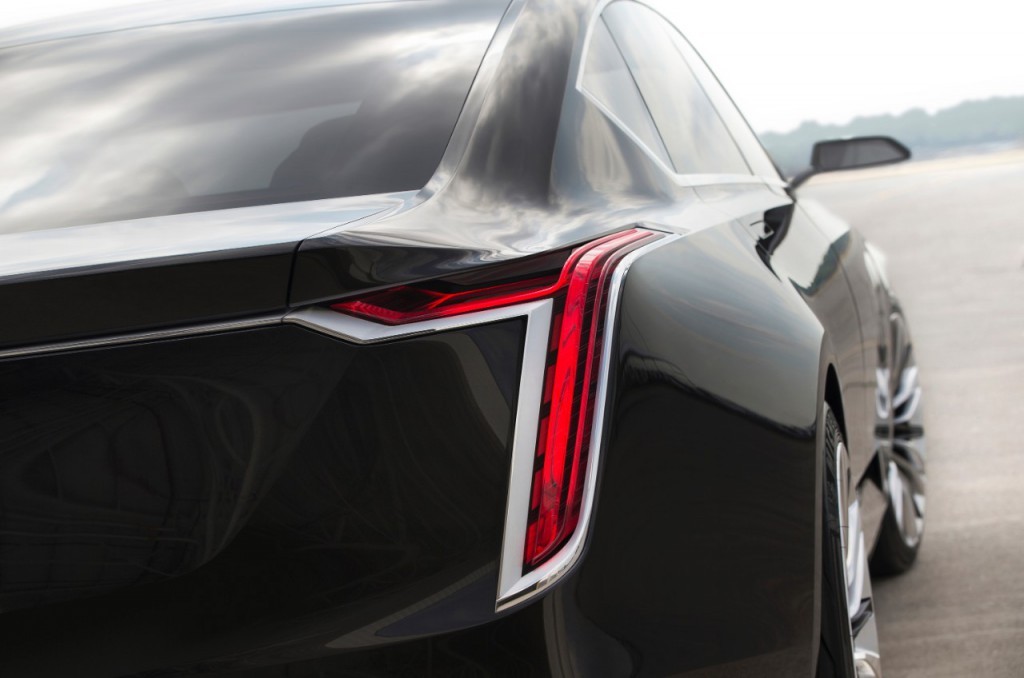The Cadillac Escala Concept, unveiled as a striking preview of the brand’s future design direction and technological innovations, made its debut in California. This concept car, which was presented in private previews before its public display at the prestigious Pebble Beach Concours d’Elegance, represents Cadillac’s vision for the next generation of luxury vehicles. The Escala is conceived as a more expressive and expansive companion to the recently launched CT6, Cadillac’s flagship sedan, signaling a bold step forward in Cadillac’s design philosophy.
Johan de Nysschen, then president of Global Cadillac, articulated the dual purpose of the Escala Concept: “First, Escala is a statement of intent for the next iteration of the Cadillac design language, and also technical concepts in development for future Cadillac models. Secondly, Escala builds Cadillac’s aspirational character, signaling the brand’s return to the pinnacle of premium.” This concept car is not just an aesthetic exercise; it embodies the future direction of Cadillac, emphasizing both design evolution and technological advancement. While the Escala is a concept, Cadillac emphasized its grounding in the brand’s increasing product substance, suggesting it as a potential model depending on market trends for large luxury sedans.
“Escala,” meaning “scale” in Spanish, is designed to be a larger and more elite counterpart to the Cadillac CT6. As the third in a series of significant concept cars debuted by Cadillac at Pebble Beach, following the Ciel convertible and Elmiraj coupe, the Escala continues Cadillac’s tradition of showcasing innovative design and luxury. Measuring 210.5 inches in length, it surpasses the CT6 by approximately 6 inches, offering a more substantial presence and interior space.
The exterior of the Cadillac Escala introduces an evolved design language that is expected to influence future Cadillac production models. A key feature is the reimagined vertical lighting, a Cadillac signature since 1948. The Escala utilizes organic light-emitting diode (OLED) technology for thinner, deeply set lighting elements, creating a distinctive and sophisticated appearance both during the day and night. Further design details include a three-dimensional precision pattern in the grille and striking 22-inch wheels featuring a layered spoke design, all contributing to the vehicle’s premium aesthetic.
Andrew Smith, executive director of Cadillac Global Design, described the Escala as embodying “a new experience that is uniquely American, and unmistakably Cadillac.” He emphasized its role as “an expressive symbol of reward and an exhilarating driving experience.” The interior of the Escala is particularly notable for its “dual personality” design, dividing the cabin into distinct zones focused on technology and relaxation.
The front of the Escala’s interior is oriented towards modern technology, featuring a prominent array of three curved OLED screens. These thin, curved displays are layered in front of the driver, encased in hand-stitched leather embossed with the Cadillac script. This integrated system merges the traditional driver’s instrument cluster with the center stack functions into a single, cohesive unit. The rear cabin prioritizes passenger relaxation and comfort, creating a contrasting environment within the same vehicle.
Connectivity and control within the Cadillac Escala are advanced, showcasing a prototype user experience for future Cadillac models. A central control module allows drivers to manage connectivity functions through tactile commands, alongside voice and gesture control. The controller itself is adorned with a new iteration of Cadillac’s “flying Goddess” icon, a subtle tribute to the brand’s rich heritage. The interior craftsmanship maintains Cadillac’s tradition of hand cut-and-sewn techniques, but introduces new materials like hand-tailored fabric on door trim and seating areas. This fabric, inspired by materials from the fashion industry, adds a unique level of handcrafted detail and color to the automotive interior.
Underneath its concept form, the Escala utilizes Cadillac’s new RWD-centric large luxury car architecture, the same advanced body structure first seen in the CT6. This mixed-material construction is designed for enhanced agility and efficiency. Powering the Escala is a new 4.2-liter twin-turbo V-8 engine, a prototype of a system under development for future Cadillac vehicles. This advanced engine incorporates Active Fuel Management technology, enabling fuel-saving 4-cylinder operation, blending performance with efficiency.
In conclusion, the Cadillac Escala Concept serves as a compelling preview into the future of Cadillac design and technology. It embodies a vision of American luxury that is both innovative and deeply rooted in Cadillac’s heritage, suggesting a promising direction for the brand’s future models in the luxury automotive market.

